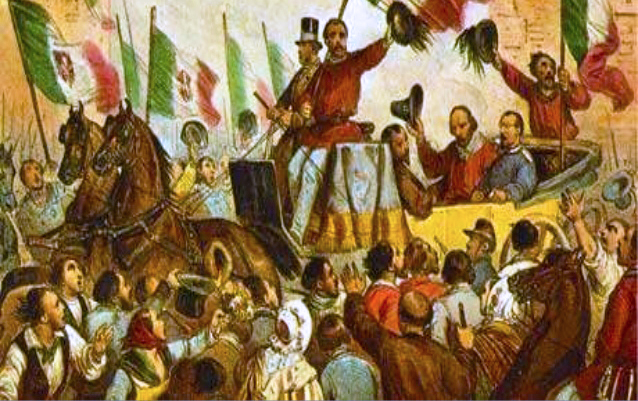March 17th may not be a national holiday in Italy, but it may well be the most patriotic day of the year – the National Day of Unity. We tend to think of Italy in terms of its culture and history, rich beyond measure. The monuments of the Roman Empire are among the most visited in the world. The Italian Renaissance gave us the world’s most famous works of art and yet, for all of its treasures, the country that we think of as Italy is actually quite young, even more so than the United States. The Kingdom of Italy was officially founded on March 17, 1861.
Before that historic date, the peninsula was fragmented into rival states and regions that had changed hands, allegiances and boundaries frequently over the centuries. These included the Grand Duchy of Tuscany, the Duchy of Modena, the Papal States, the Kingdom of Sardinia, the Kingdom of Lombardy-Venetia, THE Kingdom of Naples and the Kingdom of the Two Sicilies.
Italy’s unification did not occur on a single date. It took several decades during which there were first revolts and reforms, as well as wars. The unification or Risorgimento period is roughly defined as occurring between 1815 and 1870.
Napoleon had invaded Italy in 1796 and it was his defeat in 1815 at the Battle of Waterloo that paved the way for unification efforts. The 1830s saw unrest and a series of nationalist revolts across the country, but this was largely suppressed. In the mid-1840s, rising nationalism across the whole peninsula reignited revolts.
In Sardinia, its king, Vittorio Emanuele, was gaining recognition due to reforms and public works, while Prime Minister Count Camillo di Cavour built up strategic alliances across Europe. Sardinia allied with Britain and France in the Crimean War, earning it an invitation to the subsequent peace conference. There, Cavour promoted the cause of Italian unification.
This inspired more revolutionary activity. First, Tuscany, Parma, Modena and Romagna voted to unite with Sardinia, but in other areas such as the Papal States and the Kingdom of Naples, Cavour had to send in troops to secure victory. This succeeded in uniting much of the peninsula, although Rome and Venetia did not join the Kingdom until 1870.
The first king of the new Italy was Vittorio Emanuele II. Born in 1820, Vittorio Emanuele had become King of Sardinia-Piedmont at the age of 29 and was able to take the throne as Italy’s very first king, where he reigned until his death in 1878. You can see his tomb at Rome’s Pantheon today.
Giuseppe Garibaldi made a huge contribution to the Italian unification and is considered one of the greatest generals of modern times. He is also known as the “Hero of the Two Worlds” because of his military enterprises in Brazil, Uruguay and Europe. He commanded and fought in many of the military campaigns that led eventually to the Italian unification.
The very first capital of Italy was Turin. Just four years later, however, Florence became the capital city before Rome was finally given the honor in 1871.
So why is March 17th not a national holiday in Italy? Generally, Italy opts to mark the founding of the Republic of Italy on June 2nd, rather than the March 17th date of unification. It was on June 2, 1946 that Italians narrowly voted to approve a constitutional referendum to abolish the monarchy, thus becoming a democratic republic – the form of government that continues to this day.




